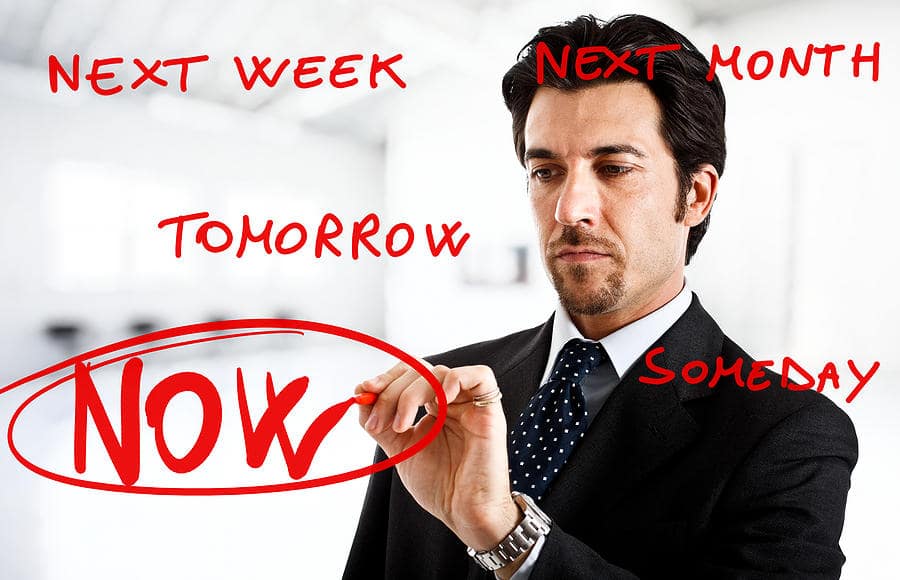Mindful Leadership expert Josh Ehrlich, Ph.D., author of MindShifting: Focus for Performance, joined me on âTurn the Pageâ to discuss how you can practice mindfulness, and integrate it as a team sport in your organization.
Dr. Ehrlich highlights that âmindfulness does not just mean meditation.â It is reflected in the way we breathe, walk, eat, smile, and work. Examples include managing our access to electronic devices and communications such that we can be focused and present while on conference calls, during learning and development activities, etc.
Dr. Ehrlich provides additional guidance to support you and your organization in your practice of mindfulness, and in reaping itâs many research-based benefits:
MINDFULNESS AND PRODUCTIVITY
âFortune 500 organizations are teaching mindfulness to employees not because it makes them feel better (which it does), but because it makes them more productive. We get more productive when we focus on our process (how we get results), not just on outcomes (the scorecard of results themselves). Mindfulness helps us focus on our own process and thus to learn and perform more effectively.â
MINDFULNESS AND NATURE
âItâs as if many of us have ADDâAttention Deficit Disorder. Our environment and constant stimulation from technology creates it. So we feel restless, and this impulse correctly asks us to move. But instead of racing around we can practice moving mindfully while walking from one meeting to the next, or while stretching (which is the essence of yoga). Moving mindfully outdoors is especially beneficial. We evolved outdoors, so it makes sense that nature would bring us back to our senses (Kabat-Zinn, 2006). Spending time in natural settings seems to reduce symptoms of attention deficit, as well as make us more creative problem-solvers (Park, Tsunetsugu, Kasetani, Morikawa, Kagawa, & Miyazaki, 2009). Thus, we can speculate whether our societal challenge is attention deficit or really nature deficit. When we design buildings where we have access to nature, we get higher productivity, lower stress, and the restoration of attention (Ryan, Browning, Clancy, Andrews, & Kallianpurkar, 2014). So, go take a hike. It will restore you and make you more productive.â
MINDFULNESS AND DECISION MAKING
âExcessive urgency is the enemy of clear and creative thinking. We are running frantic, trying to keep up with our own and othersâ expectations. So slowing down is helpful. At the same time, mindfulness does not mean going slow. We can practice mindfulness in the beginning by stopping the action and curtailing some of the input and noise to make it easier. So we may close our eyes and shut the door and breathe quietly for a minute. Ultimately through this practice we can do our job mindfully and run meetings mindfully, making decisions quickly when needed. We can make decisions more effectively because our mind is clear. Speed up when you need to, but donât loose your awareness of yourself or your breath.â
MINDFULNESS AND SELF-ACCEPTANCE
âLeaders facing increasing pressure and uncertainty attempt to do more with less, multitasking and transacting instead of connecting. These overloaded leaders show up as fragile, less effective and less able to learn and adapt. Great leaders are mature. They have a stable sense of self that is not vulnerable to short-term setbacks. They learn from failure and are eager for constructive feedback. The foundation for this is positive self-regard. However, many leaders do not feel good about themselves. They are regularly told the bar is being raised and that they need to achieve more to get the same rewards.
We try to solve this problem backwards. We try to create a sense of self from the outside in (building self-esteem), instead of from the inside out (cultivating self-acceptance). However, we cannot control extrinsic sources of self-esteem: material rewards, approval and accomplishment. The result is leaders and employees who show us their immaturity and dark side (Hogan, 2015). They demonstrate fear, judgment and hostility. In contrast, self-acceptance is based on a solid intrinsic foundation: alignment (being in sync with our values and purpose), self-regulation (riding emotional ups and downs), and self-support (treating yourself with kindness vs. self-criticism).
Mindfulness doesnât mean being passive or letting others bully youâit means trusting your gut, listening to your feelings and speaking your truthâyour experience. So while self-acceptance is based on compassion and being kind to yourself, it is not about being a âsofty.â You still have to stick up for yourself when your boundaries are being violated. This is practicing kindness towards yourself too.â
MINDFULNESS AND INCLUSIVITY
âMindful self-acceptance enables us to create inclusive organizations. Self-acceptance helps us be less biased and interested in difference, thus helping us build environments where everyone feels welcome. Inclusive environments engender psychological safety, which results in a sense of belonging, better ideas and better teamwork (Google, 2016).
The application of mindfulness to diversity is about opening and appreciating rather than rejecting difference. Instead of focusing on biases and stereotypes, we can talk about how to cultivate curiosity and openness. Rather than emphasize diversity quotas and statistics, which is especially prevalent in the US, we can focus on the business case for inclusive environments. This means welcoming all kinds of people, ideas and styles. The outcome is better decisions and greater innovation for teams and global organizations. Next time you are on a bus or train or plane, look at the faces of those around you. Notice any inner withdrawal or mild revulsion. See if you can look at difference with curiosity. Who are these fascinating strangers?
Here is my prayer for inclusivity:
If I can accept myself, I can be open to you
If I can be open to you, I can be curious
If I can be curious, I can avoid judging
Most interactions at work are focused on problem solving. So it seems strange to focus instead on empathy and connection. But that is precisely what a mindful approach to work suggests. This helps us build relationships that are the foundation of effective business. Work gets done through relationships, not transactions. When we tune in and understand each other at a deeper level, we are able to connect with our employees and influence key constituents with more impact.â
THEREâS MORE
Dr. Ehrlich invites you to integrate mindfulness practices to improve quality of life and performance in your organization by exploring these resources:
Two segments of his video series:
⢠Practicing Mindful Leadership introduces Dr. Ehrlichâs model and how to apply it to leadership (5:18 min)
⢠Creating Mindful Organizations outlines ways you can create more mindful teams and cultures (5:29 min).
Read his article about mindful leadership, and his book, âMindShifting: Focus for Performance.â Learn more about his services at www.globalleadershipcouncil.com.
Listen to my conversation with Dr. Ehrlich to learn more about the ways that you can practice mindfulness to build leadership skills, foster engagement, increase your work-life satisfaction, and more.


![[#Beginning of Shooting Data Section] Nikon D200 Focal Length: 56mm Optimize Image: Custom Color Mode: Mode I (sRGB) Long Exposure NR: Off High ISO NR: On (High) 2007/03/04 17:03:10.9 Exposure Mode: Manual White Balance: Direct sunlight Tone Comp.: Normal RAW (12-bit) Metering Mode: Center-Weighted AF Mode: AF-C Hue Adjustment: 0° Image Size: Large (3872 x 2592) 1/40 sec - F/5.6 Flash Sync Mode: Not Attached Saturation: Normal Color Exposure Comp.: 0 EV Sharpening: Medium high Lens: 24-85mm F/2.8-4 D Sensitivity: ISO 400 Image Comment: [#End of Shooting Data Section]](https://www.vapresspass.com/wp-content/uploads/2016/06/Josh-Ehrlich.jpg)



